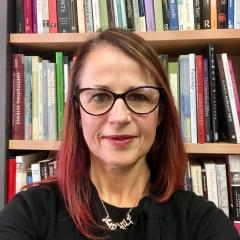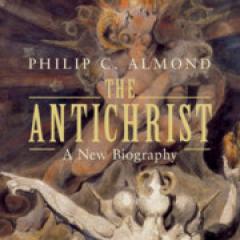Women have long been central to the humanities, and the humanities have concomitantly played an important part in the emancipation and suffrage of women. Early fighters for women’s rights like Olympe de Gouges and Mary Wollstonecraft built their activist work on humanities principles and the philosophy of the Enlightenment. The humanities gave us the strength to stand up to oppression and fight for our right to carve out our path in the world. International Women’s Day 2017 provides an occasion to remember women’s important role in building the humanities, and to support women’s leadership in shaping the future.
IASH hosts diverse women researchers, including:
UQ Postdoctoral Research Fellow Diana Barnes’ research on early modern English literature, in which gender is a key term. She has an ongoing interest in a number of early modern women writers including Margaret Cavendish, Dorothy Osborne, Brilliana Harley and Mary Wortley Montagu. In addition she analyses the place of gender in a variety of male-authored writing (the poetry of Andrew Marvell, for instance), and in discourses such as, philosophy, news, and letters, for example.
Amy Shields Dobson is a UQ Postdoctoral Research Fellow at IASH where her work focuses on youth, gender politics, and social media. Gender and feminism are central to Amy’s projects, including research into cyber-safety education, sexting in schools, and female genital cosmetic surgery in Australia. She has recently contributed to a special issue of Social Media & Society on Gender. In 2015 Amy edited a special issue of Continuum: Journal of Media and Cultural Studies on ‘Post-girlpower: globalized mediated femininities’ with Prof Anita Harris. Her book Postfeminist Digital Cultures (2015) is published by Palgrave Macmillan.
Anna Johnston is an ARC Future Fellow in IASH, and Associate Professor in the School of Communication and Arts. Her areas of research include colonial archives and knowledge production, missionary writing and empire, colonial and postcolonial literatures, and travel writing: gender is a central component of each field. She is the author of The Paper War: Morality, Print Culture, and Power in Colonial New South Wales (UWAP 2011) and Missionary Writing and Empire, 1800-1860 (Cambridge 2003); her most recent book, with Mitchell Rolls, is Travelling Home, Walkabout Magazine, and Mid-Twentieth-Century Australia (Anthem 2016).
Nina Li studies digital technologies from a cultural perspective. She is also interested in gender representations in popular media. Currently, she is writing a book on the cultural history of video streaming industry in China. In this book, she particularly examines how piracy informs the development of the online video industry. Before coming to Australia, Nina studied and worked in Shanghai, Hong Kong, United States, and Singapore. She likes Brisbane, especially its fresh food and mild winter.
Charlotte-Rose Millar is a UQ Postdoctoral Research Fellow in IASH and Associate Investigator with the ARC Centre of Excellence for the History of Emotions. Her research focuses on early modern witchcraft, diabolism, emotions, popular print and sexual practices. Her forthcoming book explores the role of the Devil in English witchcraft and highlights how witchcraft narratives emphasized strong emotions such as love, lust, malice, anger and hatred as the primary motivators for witchcraft acts and accusations. She is currently working on an article about the dangers of the night and exploring cases of accused witches who believed that the Devil visited them under cover of darkness to tempt them away from God.
Karin Sellberg is a UQ Postdoctoral Research Fellow at IASH, and she also lectures on the history of medicine and sexuality for the School of Historical and Philosophical Inquiry and runs an emerging UQ medical humanities research network. She specialises in feminist and queer historiography, early modern drama and medical humanities. She is particularly interested in convergences between feminist identity discourses and histories of early modern embodiment and reproduction.



